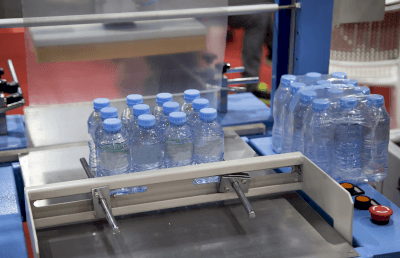What Is a Shrink Wrap Machine?

A shrink wrap machine hermetically seals various products with a transparent film.
Shrink-wrapping encases the product, offering protection and preventing contamination. It is particularly useful for bundling multiple items together, keeping them consolidated. The film also facilitates the application of stickers and labels.
Shrink wrap machines are categorized into partial or full coverage models. Partial coverage types include shrink labels, caps, and R-seals, while full coverage types comprise L-shrink and pillow shrink.
Uses of Shrink Wrap Machines
Shrink wrap machines are employed across various manufacturing sectors like food, cosmetics, and pharmaceuticals, where airtight packaging is essential. They are ideal for items such as meats, vegetables, bread, books, CDs, and DVDs, protecting them during transit.
These machines also play a crucial role in safeguarding products from scratches and dirt, while enhancing product design with labels and attachments.
For instance, PET bottles can be bundled together with shrink wrap for shipping.
Principle of Shrink Wrap Machines
Shrink-wrapping involves heating packaged goods as they move through a shrink tunnel. These tunnels, which can be steam or hot air types, uniformly heat the film. Steam tunnels offer higher thermal conductivity and a smoother finish, though may leave water droplets that require treatment. The hot-air method, especially the tornado shrink, directs hot air from multiple angles, closely matching the steam method’s finish accuracy.
For smaller batches or adjustments, heat guns and similar tools offer a manual alternative to these mechanical processes. Shrink-wrapping employs films that contract upon heating, typically made from polyester for its superior shrinkability.
Types of Shrink Wrap Machines
Shrink wrap machine types include dryer and tunnel models.
1. Dryer Type
The dryer method uses hot air to contract shrink film around the product. Products are first enclosed in shrink film, trimmed, sealed, and then subjected to hot air, typically in an industrial dryer, to shrink the film snugly around them.
2. Tunnel Type
In the tunnel method, products wrapped in shrink film are passed through a tunnel where hot air evenly contracts the film. This method tends to produce a more uniform shrink than the dryer method and includes steam, hot-air, and hot whirlwind (tornado shrink) variations for effective shrinking.
Similar to the dryer method, products are first enveloped in shrink film, trimmed, and sealed before shrinking in the tunnel.
How to Select Shrink Wrap Machines
Choosing the appropriate shrink-wrapping machine depends on specific needs and applications.
1. Dryer Type
With lower initial costs, the dryer type is suitable for startups and small-scale production. It’s compact and versatile for irregularly shaped products. However, it requires more time and effort for shrinking, with the potential for uneven results due to manual heat application.
2. Tunnel Type
This method is better suited for uniform shrinking and mass production, allowing precise heat control. It necessitates a larger investment and space for the machinery and is limited to products that fit within the tunnel.